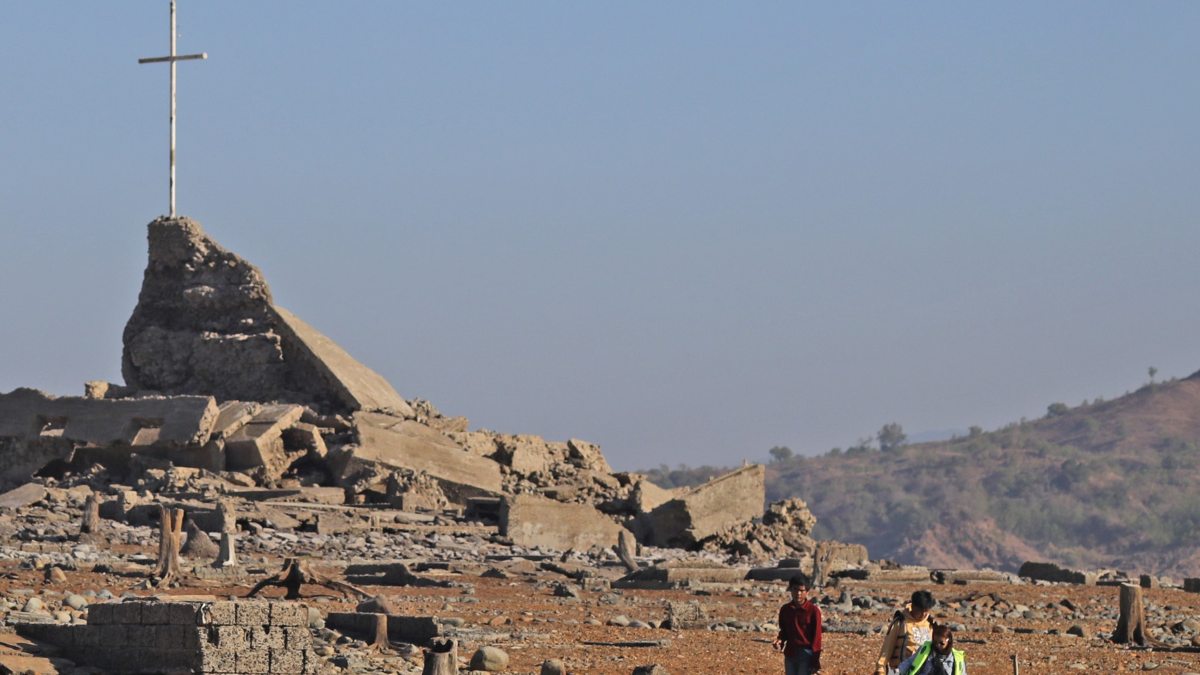The historic Pantabangan town in Nueva Ecija has resurfaced from underwater, unveiling its 300-year-old settlement to the world once again. The town, submerged in 1973 to make way for the construction of the Pantabangan Dam, has emerged due to the effects of the dry season this April.
“Under normal circumstances, the historic town cannot be seen as it is entirely underwater,” remarked a local official. “But with the water level in Pantabangan Dam dropping to 3.6 meters below its low water level, the town has reappeared, offering a glimpse into its rich history.”
The emergence of Pantabangan town sheds light on a poignant past. Displaced by the dam’s construction, residents were forced to restart their lives elsewhere. Reflecting on the sacrifices made, the Pantabangan website noted, “Indeed, the Pantabangenos sacrificed so much in the interest of national economic growth.”
The present-day Pantabangan, now comprising 14 barangays, boasts three hydroelectric plants, making it unique in the Philippines. The Pantabangan Dam, hailed as the “cleanest in the country” and one of Asia’s largest, generates 112 megawatts of hydroelectric power and supports irrigation across 77,000 hectares of agricultural land in Central Luzon.
This isn’t the first time the ancient town has resurfaced; it occurred previously in 1983, 2014, and 2020, all coinciding with peak El Niño periods. With March, April, and May being the hottest and driest months in the Philippines, this year’s conditions have been exacerbated by the El Niño weather phenomenon.






